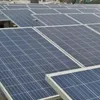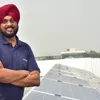This Pune startup is enabling people to reduce their carbon footprint by harvesting solar energy efficiently
Pune-based startup Sys3E has developed a solar solution that can generate 25 to 30 percent more energy than a conventional system.
It is hard to imagine fighting climate change without changing the way we use energy. The hidden costs associated with conventional forms of energy such as coal, oil, and natural gas are not only huge but also harmful. In 2011, a whopping 85 percent of the world's particulate pollution, including toxic emissions like carbon dioxide and nitrogen oxide, was being generated from the combustion of fossil fuels.
Today, many countries are turning this around with the adoption of renewable sources of energy like biomass, wind, and solar. In the last few years, India has been meeting its demand for electricity by showing a deep commitment to harnessing the unlimited power of the sun.
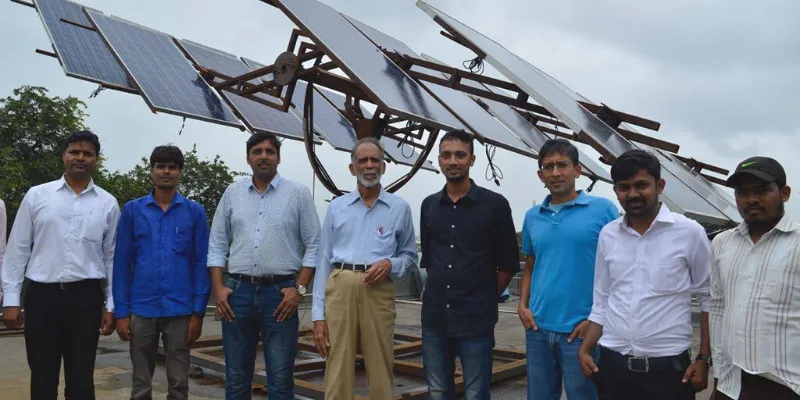
The team of Sys3E.
Pune-based startup is in pursuit of accelerating this through its efficient solar-based systems. Founded by Shilowbhadra Banerjee, Sudhir Muthyala, Rajarshi Banerjee, and Sahil Kala in 2016, the startup’s primary product SunCaptor, consists of a mounting system that includes a controller and tracker that can optimise generation of solar energy.
“Our focus at Sys3E has always been on three aspects: energy, environment, and ecology. This is reflected in the name of the organisation. Through our research, we found quite a few inefficiencies in small-scale solar setups. For instance, every third panel in a conventional solar system was either not utilised or remained underutilised. So, we developed a product that can judiciously utilise resources," says Sudhir Muthyala, Co-founder and CEO, Sys3E.
A new beginning
Three of the co-founders of Sys3E were working with Zeus Numerix, a Mumbai-based company known for its innovative solutions in the defence and aerospace sector. While Shilowbhadra, Sudhir and Rajarshi (who was a client of Zeus), took the plunge to establish the startup in 2016, Sahil joined a year later.
“Our team did not have a clear mission statement in the beginning. The only thing we were sure of was that we wanted to make a difference in the way people consumed energy. So, to gain better insights, we attended a series of workshops and accelerator programmes organised by Xlr8AP in collaboration with Federation of Indian Chambers of Commerce and Industry (FICCI),” Sudhir recollects.
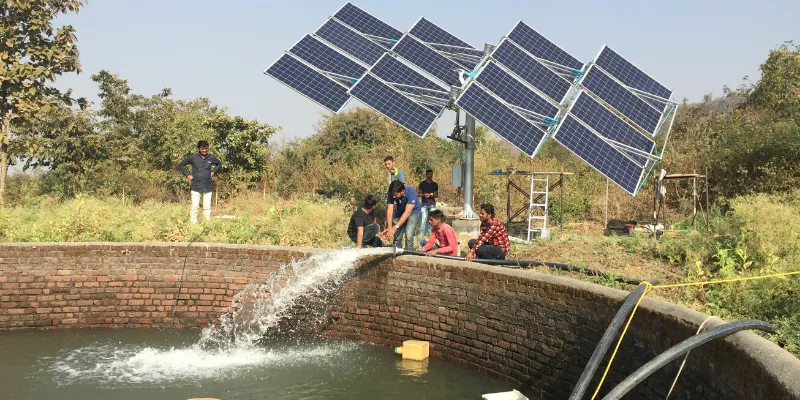
Sys3E's SunCaptor being installed at a farm.
Most solar tracking solutions in today’s market cater to large systems that have a capacity of more than 50 to 100 kilowatts (kW). After conducting research studies and market surveys, the co-founders decided to narrow down their offering and develop a viable and smart tracking system to generate solar power specifically targeted towards individual users and small entities like farmers, households, and commercial utilities, who require solar setups below five kilowatts. Aligned to this mission, the startup designed and developed SunCaptor.
“The system that we built was such that it could generate 23 to 25 percent more energy than the conventional static setups. Also, since the customer can land the desired output with lesser number of panels, s/he will be able to reduce costs by at least 10 percent,” adds Sahil Kala, CPO, Sys3E.
Initially bootstrapped, the startup is now incubated and supported by Pune-based Venture Centre. Sys3E received a prototype fund from the Department of Science and Technology as part of its initiative called Nidhi Prayas. Sys3E is also being mentored and funded by SocialAlpha since 2018.
The startup at present has around 15 employees involved in producing and marketing its product.
Tapping solar energy efficiently
Primarily, Sys3E’s SunCaptor consists of a tracking device and a mounting system, including a smart controller. Only solar panels and an inverter need to be bought from the market to set up the complete system.
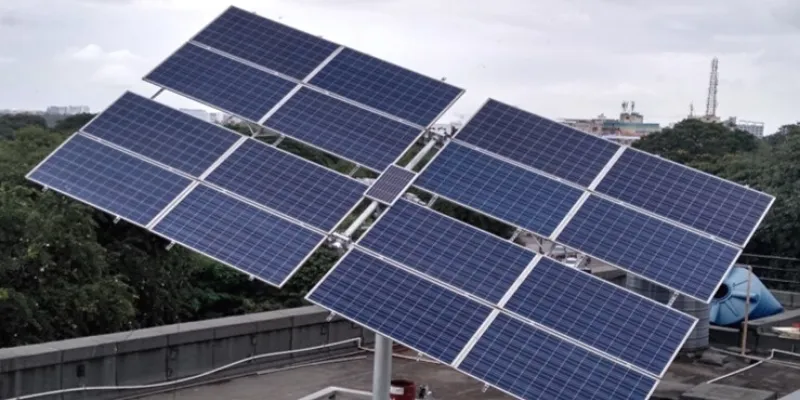
Sys3E's solar solutions are installed at many rooftops to help households harness the power of the sun.
“The smart controller of the setup has been designed in such a way that it enables the panels to automatically adjust its stance according to the position of the sun, to tap the maximum energy possible. We have put together a database, as well as a bunch of algorithms, to ensure this at any given point. On the other hand, the tracking device, once configured, drops constant reminders about cleaning the panels and also makes it easier for the user because of its in-built cleaning mode. The amount of electricity generated during a specific time period can be monitored through apps like SMA, ShinePhone, SMTen,” Sahil explains.
At present, SunCaptor is available in three variants – a modular version that can be used for agrovoltaics, car parking spaces, and EV charging stations; a six to eight-panel system that is ideal for 2 to 3 kW rooftop and pumping installations; and finally, a 16-panel setup that can power larger units like five kW solar pumps, bungalows, and microgrids. The price ranges between Rs 35,000 and Rs 77,000; it differs for customised solutions.
All of Sys3E’s SunCaptors are produced in-house in the startup’s manufacturing facility in Talawade, Pune. The team is planning to launch more modular and customised versions in the near future.
Spurring a sustainable revolution
Renewable energy sources like solar do not emit any greenhouse gases, and hence facilitate the reduction of carbon footprints. Since Sys3E’s SunCaptor is designed to harness an additional 25 percent of energy as compared to conventional systems, the positive impact it has on the environment is a lot more.
“For every 1 kW of electricity generated using a SunCaptor, 4.6 kilograms of carbon emissions can be avoided. Our solution is aimed at encouraging people to switch to practices that are green. This is not all. We want to make way for the industrial sector as a whole to contribute to the usage of clean energy,” Sudhir says.

Ram Dhawale with Sys3E's Co-founders Shilowbhadra Banerjee and Sudhir Muthyala.
Ram Dhawale, a resident of a village called Kasarsai in Pune, turned to a 5kW SunCaptor system for pumping wate for agricultural and household usage after facing a constant disruption in the supply of electricity in his locality.
He says, “I have been using Sys3E’s solar setup to run my irrigation pump, farm equipment, as well as household appliances for the last year. It has worked very well for me since it has been providing uninterrupted energy all the time, and there is a provision to store excess supply as well.”
(Edited by Suman Singh)



